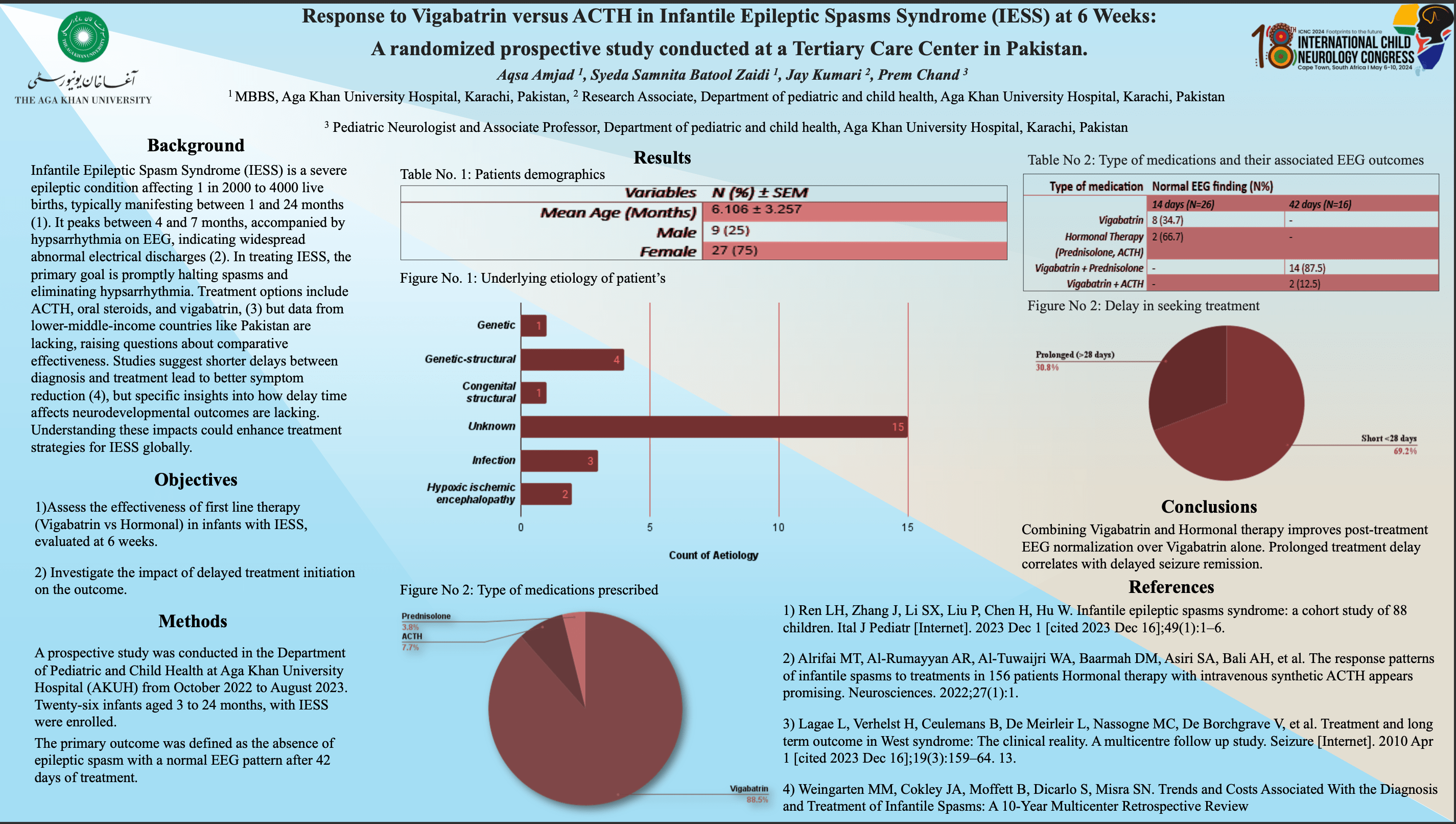Response to Vigabatrin versus ACTH in Infantile Epileptic Spasms Syndrome at 6 Weeks: A randomized prospective study con
Introduction Infantile epileptic spasm syndrome (IEES) is severe epileptic encephalopathies which affect children in early two years of life, characterized by clustered epileptic spasms and hypsarrhythmia on EEG.
Objective 1)Assess the effectiveness of first line therapy (Vigabatrin vs Hormonal) in infants with IESS, evaluated at 6 weeks. 2) Investigate the impact of delayed treatment initiation on the outcome.
Methods A prospective study was conducted in the Department of Pediatric and Child Health at Aga Khan University Hospital from October 2022 to August 2023. Twenty-six infants aged 3 to 24 months, with IESS were enrolled. The primary outcome was defined as the absence of epileptic spasm with a normal EEG pattern at 42 days of treatment.
Results Of 26 infants, 23 (86%) were randomly given Vigabatrin, while 3 (14%) received hormonal treatments (2 = ACTH and 1= Prednisolone) for an initial 2-week period. After 14 days of treatment, 8 (34.7%) received Vigabatrin and 2 (66.7%) hormonal therapy exhibited normal EEGs. A second therapy was initiated in the remaining sixteen with abnormal EEGs, of which 14 (87.5%) received Vigabatrin plus ACTH, and 2 (12.5%) received Vigabatrin plus Prednisolone. Post-treatment EEGs at 6 weeks showed normal findings for 4 (28.6%) of those receiving Vigabatrin plus ACTH and 1 (50%) of those received Vigabatrin plus Prednisolone.
Conclusion Combining Vigabatrin and Hormonal therapy increased the likelihood of post-treatment EEG normalization compared to using Vigabatrin alone. Our study also highlighted the influence of prolonged treatment delay on seizure remission.
Prem Chand
Aga khan university
Pakistan
Aqsa Amjad
The Aga Khan University
Pakistan
Samnita Zaidi
The Aga Khan University
Pakistan
Jay Kumari
The Aga Khan University
Pakistan

Prem Chand
the Aga Khan University
Pakistan